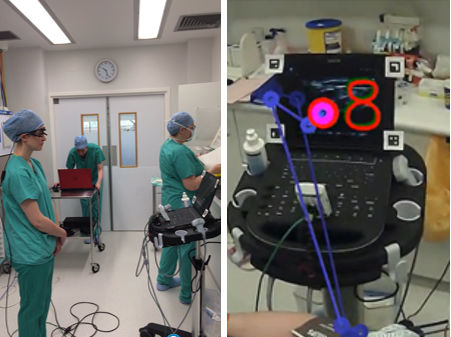Alongside out commercial partners Optomize Ltd https://optomize.co.uk/we have created a new approach to medical training using The Expert Performance Approach (Ericsson, Krampe & Tesch-Römer, 1993).which utilises a data driven approach to (i) capture and analyse individual and group cognitions, behaviour and performance to understand the mechanisms and processes that account for differences between superior and less skilled performance with the aim of reducing performance learning curves.
The Expert Performance Approach

Read more about our approach in our paper below
McLeod, G., Chuan, A., & McKendrick, M. (2024). Attaining expertise in regional anaesthesia training using a multifactorial approach incorporating deliberate practice. British Journal of Anaesthesia. https://doi.org/10.1016/j.bja.2024.06.003
We use cadaveric simulators and have captured eye movements of expert and novice anaesthetists in addition to a battery of psychometric measures to understand the mechanisms that underpin the journey towards expert performance. In our current study funded by the Tayside Health Board and the British Journal of Anaesthesia/ National Institute of Academic Anaesthesia, we are comparing the transference of learning from cadaveric training using the Theil cadavers at the https://www.dundee.ac.uk/cahid
Read more in our papers below
McLeod, G., McKendrick, M., Taylor, A., Lynch, J., Ker, J., Sadler A., et l. (2019). Validity and reliability of metrics for translation of regional anaesthesia performance from cadavers to patients. British Journal of Anaesthesia, 122(3), e49.doi: 10.1016/j.bja.2019.04.060
Sadler, A., McKendrick, M., Taylor, A., Halcrow, J., Raju, P., Mustafa, A., Seeley, J., McLeod, G. (2019). Construct validation of metrics for translation of regional anaesthesia skills from the soft embalmed cadaver to patients. British Journal of Anaesthesia, 122(3), e33-e62. doi: https://doi.org/10.1016/j.bja.2018.10.041
Cadaveric training and live scenarios

Previously we have shown that we are able to cluster poor, moderate and good learners across a number of metrics and this is useful to be able to predict the learning curve of trainees.
Read more in our paper below
McLeod G., McKendrick M., Tafili T., Obregon M.., Neary R, Mustafa A., Raju P., Kean D., McKendrick G., McKendrick T. (2022). Patterns of skills acquisition in anesthesiologists during simulated interscalene block training on the soft embalmed Thiel cadaver. JMIR Medical Education. doi: 10.2196/32840.
References
Ericsson, K. A., Krampe, R. T., & Tesch-Römer, C. (1993). The role of deliberate practice in the acquisition
of expert performance. Psychological Review, 100, 363-406. http://psycnet.apa.org/doi/10.1037/0033
295X.100.3.363
